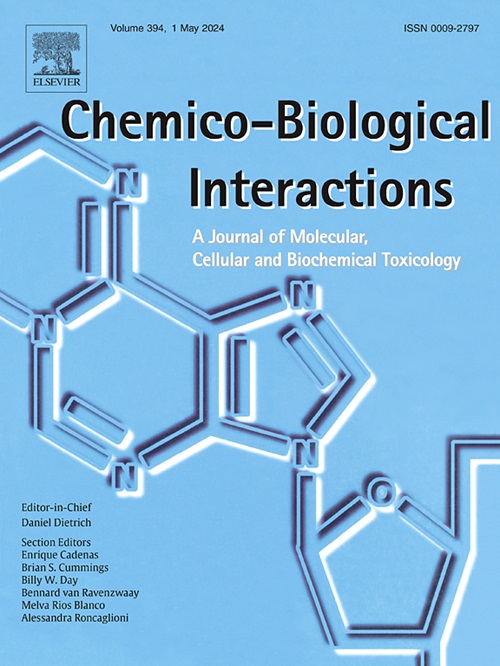Enhancing cisplatin efficacy in hepatocellular carcinoma with selenocystine: The suppression of DNA repair and inhibition of proliferation in hepatoma cells
IF 4.7
2区 医学
Q1 BIOCHEMISTRY & MOLECULAR BIOLOGY
引用次数: 0
Abstract
Cisplatin (cDDP) is a crucial chemotherapy drug for treating various cancers, including hepatocellular carcinoma (HCC). However, its effectiveness is often hindered by side effects and drug resistance. Selenocystine (SeC) demonstrates potential as an anticancer agent, particularly by inhibiting DNA repair mechanisms. This study explored the synergistic potential of SeC combined with cDDP for treating HCC. Our results show that SeC pretreatment followed by cDDP significantly suppresses HCC cell proliferation more effectively than either treatment alone, with minimal toxicity to normal liver cells. The combination induces significant DNA damage by inhibiting homologous recombination (HR) and non-homologous end joining (NHEJ) pathways. Xenograft experiments confirmed that the combined therapy strongly inhibits tumor growth. SeC boost the effectiveness of cDDP by amplifying DNA damage and inhibiting DNA repair, presenting a promising approach to enhancing liver cancer treatment.
硒胱氨酸增强顺铂对肝细胞癌的疗效:抑制肝癌细胞的 DNA 修复和增殖。
顺铂(cDDP)是治疗包括肝细胞癌(HCC)在内的各种癌症的重要化疗药物。然而,副作用和耐药性往往阻碍了它的疗效。硒胱氨酸(SeC)具有抗癌潜力,特别是通过抑制 DNA 修复机制。本研究探讨了 SeC 与 cDDP 联合治疗 HCC 的协同潜力。我们的研究结果表明,SeC 预处理后再使用 cDDP 能明显抑制 HCC 细胞的增殖,比单独使用其中一种疗法更有效,而且对正常肝细胞的毒性极小。这种联合疗法通过抑制同源重组(HR)和非同源末端连接(NHEJ)途径诱导严重的DNA损伤。异种移植实验证实,联合疗法能有效抑制肿瘤生长。SeC通过扩大DNA损伤和抑制DNA修复来提高cDDP的疗效,为加强肝癌治疗提供了一种前景广阔的方法。
本文章由计算机程序翻译,如有差异,请以英文原文为准。
求助全文
约1分钟内获得全文
求助全文
来源期刊
CiteScore
7.70
自引率
3.90%
发文量
410
审稿时长
36 days
期刊介绍:
Chemico-Biological Interactions publishes research reports and review articles that examine the molecular, cellular, and/or biochemical basis of toxicologically relevant outcomes. Special emphasis is placed on toxicological mechanisms associated with interactions between chemicals and biological systems. Outcomes may include all traditional endpoints caused by synthetic or naturally occurring chemicals, both in vivo and in vitro. Endpoints of interest include, but are not limited to carcinogenesis, mutagenesis, respiratory toxicology, neurotoxicology, reproductive and developmental toxicology, and immunotoxicology.

 求助内容:
求助内容: 应助结果提醒方式:
应助结果提醒方式:


